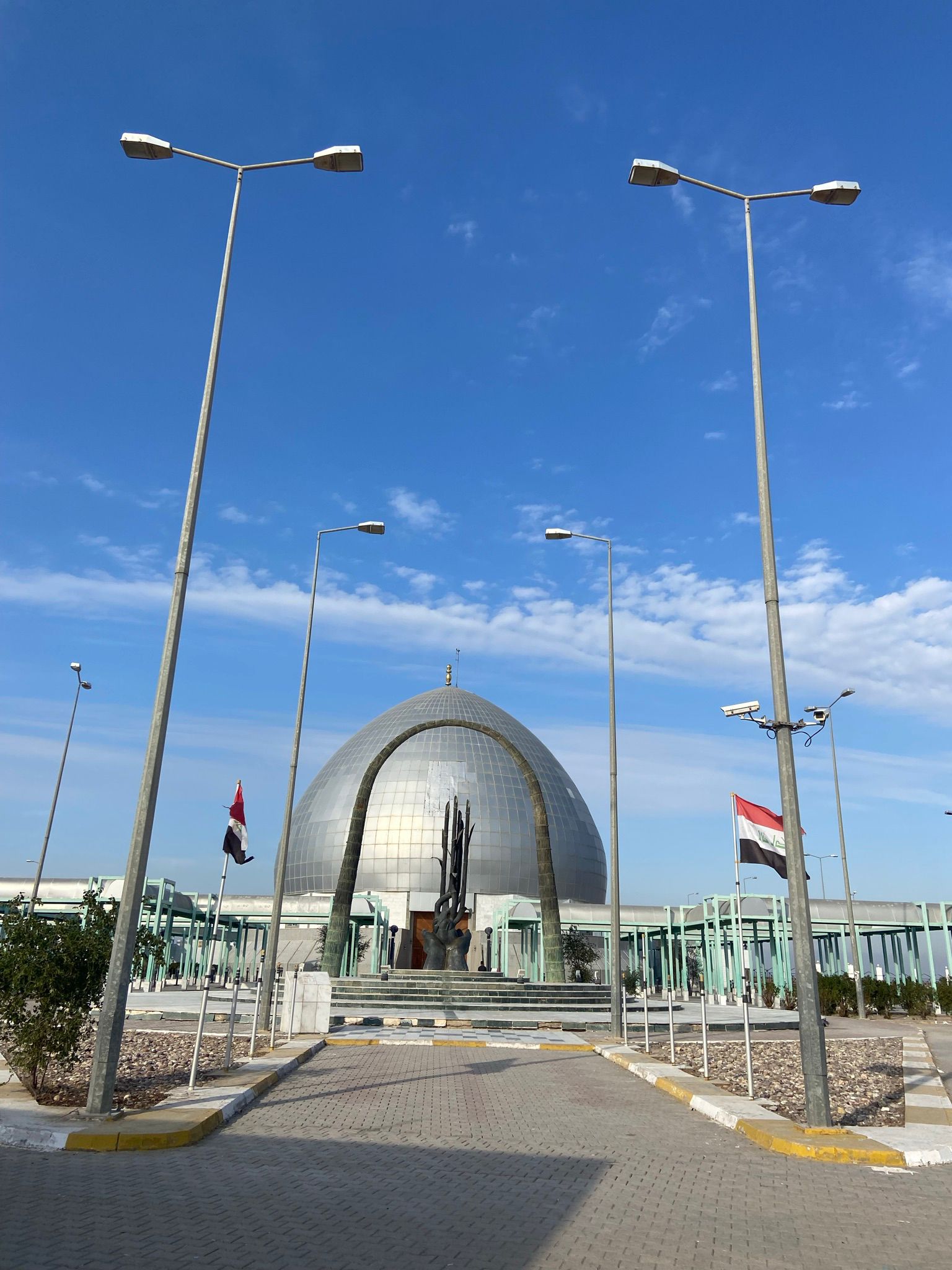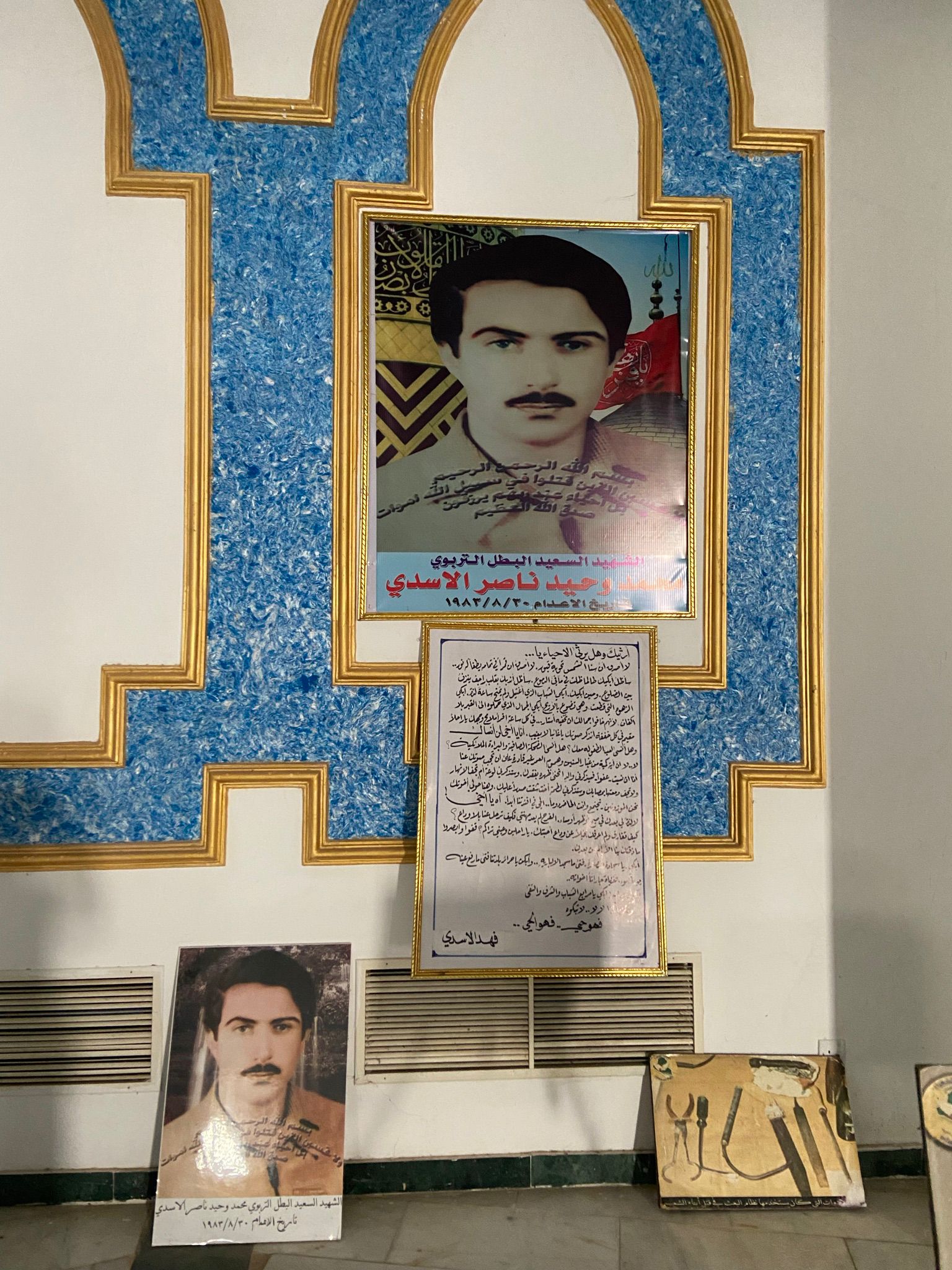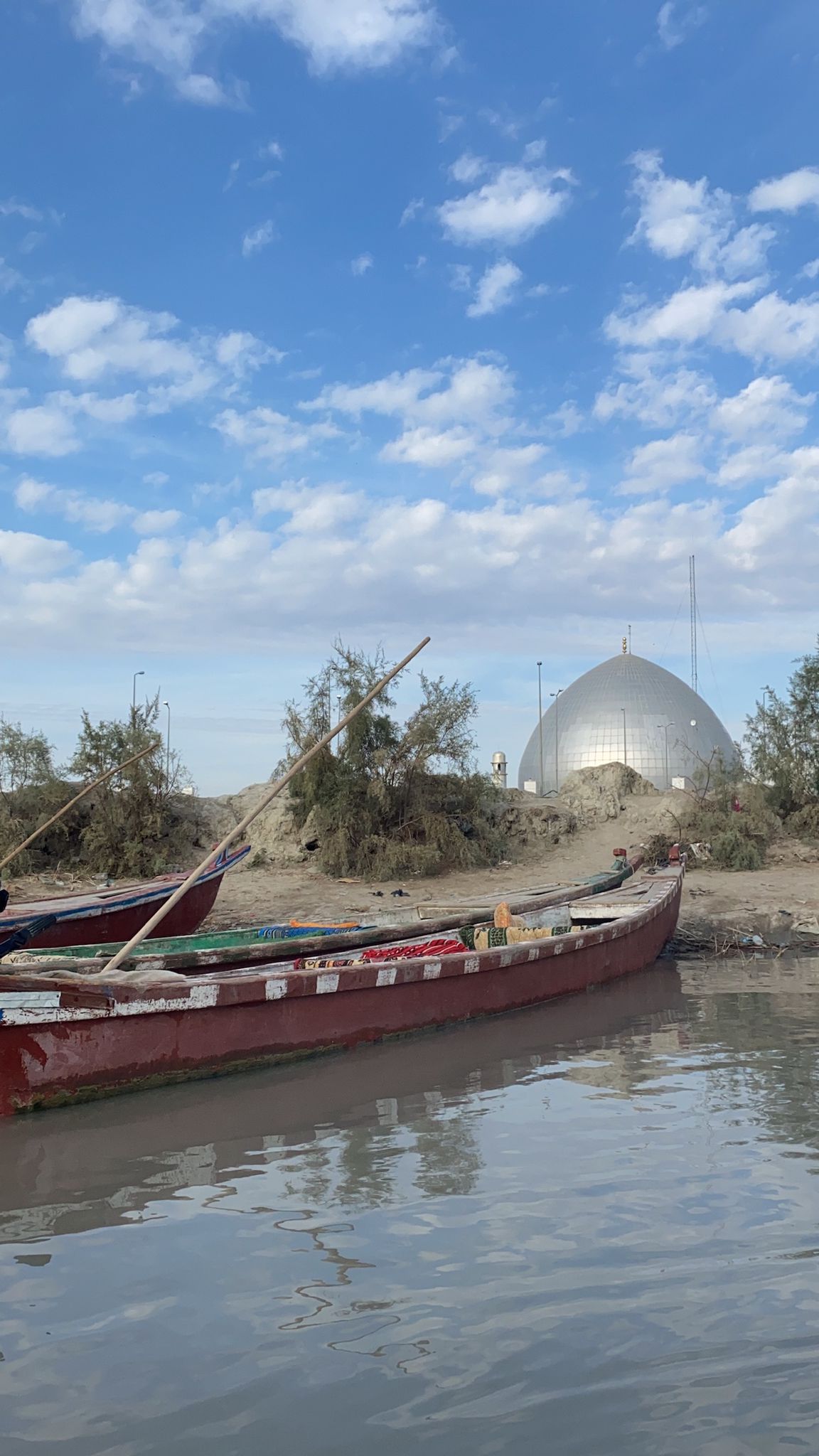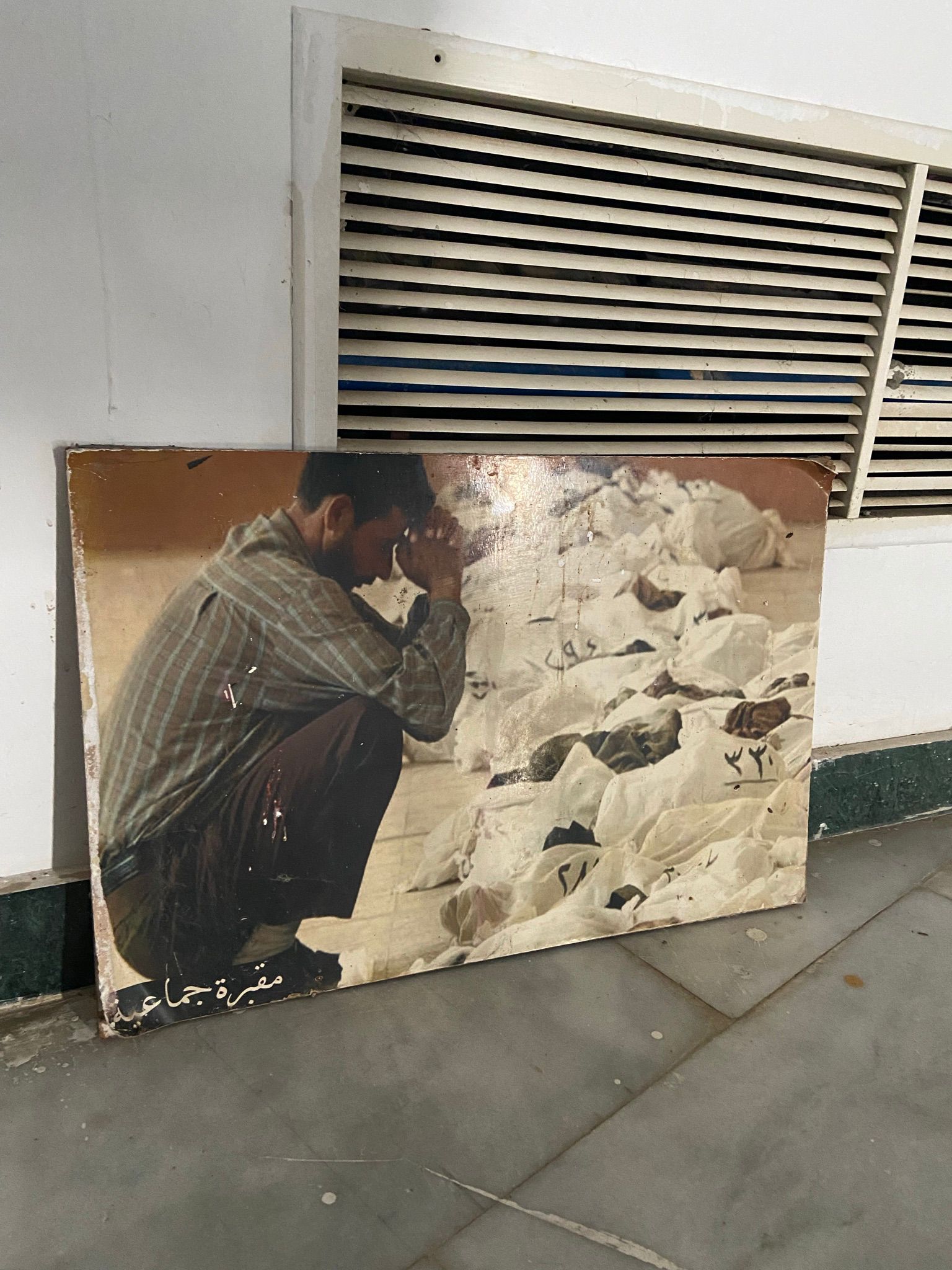The Chibayish Martyrs Monument for the marsh Arabs.
The Chibayish Martyrs Monument was built to honor the many Marsh Arab that were executed by Saddam’s Baath party at the end of the Gulf War in 1991. The graves that do not carry the names of the martyrs symbolize that the honored martyrs who defended the homeland never died and were unified in their sacrifice.

The Iraqi marshes (ahwar) are inhabited by Shi'i Arabs and they represent a continuing culture and way of living that goes back to the ancient Sumerians 5000 years ago. In the 20th century the traditional, deep-rooted culture and largely self-sufficient economy of the marsh Arabs was rarely disturbed. The first attempts to drain the Marshes came from the British administrators who wanted to reclaim land for agriculture and oil exploration. Several other waves of organized oppression the against al-Ahwar and its people followed. During the Iraq-Iran war (1980-1988) many Shia Iraqis, including Marsh Arabs, faced state repression based on suspicion of supporting the Islamic revolution or for having links with Iran. Many have since “disappeared”, while others were martyred under torture or execution.

Unlike other Shi’a, Marsh Arabs were also subjected to government-engineered environmental catastrophes. Systematic drainage reached extreme heights after the uprising against the government in 1991 (intifada al Shabaniya). To punish Marsh Arabs for their large participation in the uprising, authorities built a series of dams, dikes, and canals aimed at preventing the waters of the Tigris and the Euphrates from flowing into the marshes. In some areas, water was contaminated or intentionally poisoned. Water and reeds were transformed to desert and mud. The water level decreased that it became concentrated and salinity, killing almost all plants, reeds, and animals. Saltwater intrusion from the coast worsened the situation. The Buffalos were poisoned from the excessive salt.

The result was the destruction of the world’s largest wetland ecosystem and the forcible displacement, torture and execution of at least half a million of its native population. Numbering some 250,000 people as recently as 1991, the Marsh Arab today are believed to number fewer than 40,000 in their ancestral homeland which became just 7% of its original size by 2003. After the fall of Saddam in 2003, internally displaced Marsh Iraqis returned to their land and partly managed to restore the flow of water with their own hands by breaching dams.

